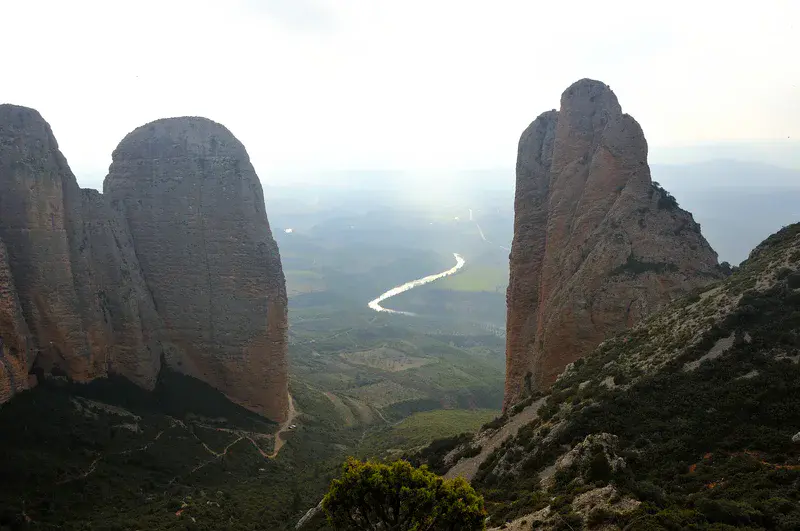
A view between conglomerates
by Antonio Girona-García, Biodiversity Research Institute (IMIB), CSIC-UniOvi-PA, Mieres, Spain
The Mallos of Riglos are one of the most representative conglomerate formations in the Pre-pyrenees. The “mallos” were originated as a result of the fluvial erosion that started with the uplifting of the Pyrenees in the Eocene. Several rivers dragged boulders, gravels and sands towards the Ebro basin. As the slope was decreasing, the gravel fraction of the sediments was deposited first, while the finer fractions were transported to longer distances. These accumulations of gravels were then lithified by the precipitation of calcium carbonate from the underground water, resulting in the formation of large conglomerate masses. After the Ebro River arrived to the sea, in the end of the Miocene, the basin started to export sediments and due to the differential erosion and the pyrenean push, vertical fracturing was produced resulting in the verticalization of the conglomerate outcrops.
Categories
- Field (2899)
- Geodynamics (372)
- Geomorphology (1407)
- Stratigraphy, Sedimentology and Palaeontology (531)
- Tectonics and Structural Geology (585)
Location
- Europe (3893)
- Southern Europe (1691)
- Spain (819)
- Exact location (-0.7272 W, 42.3508 N)
Tags
- erosion (95)
- spain (20)
- gállego river (1)
- pre-pyrenees (1)
- mallo (1)
- conglomerates (1)
- conglomerate (2)
- mallos (1)
Colours
Image properties
4288 × 2848 px;
image/jpeg; 2.7 MB
Camera:
Nikon D90
Taken on 6
December
2015
Submitted on 28 February 2016
Licence
Creative Commons Attribution-NonCommercial-NoDerivs 3.0 Unported (CC BY-NC-ND 3.0)
Credit
Antonio Girona-García (distributed via imaggeo.egu.eu)
Share
Appreciate
Report